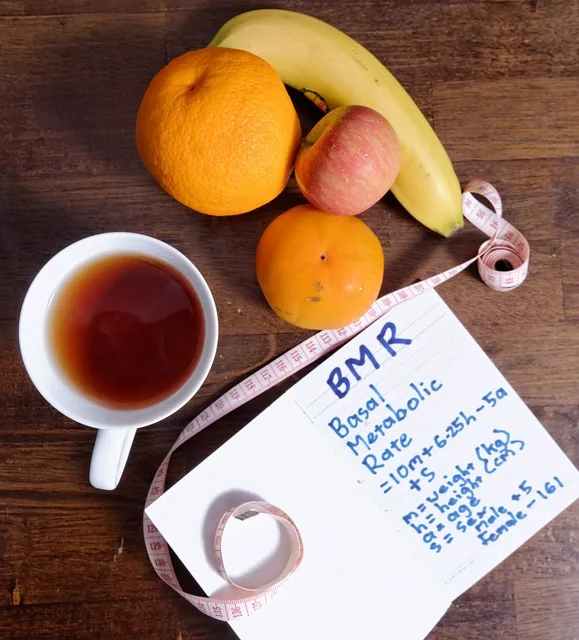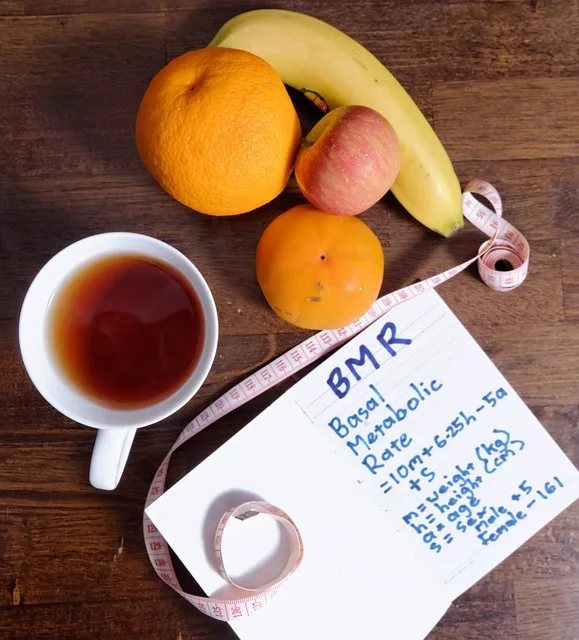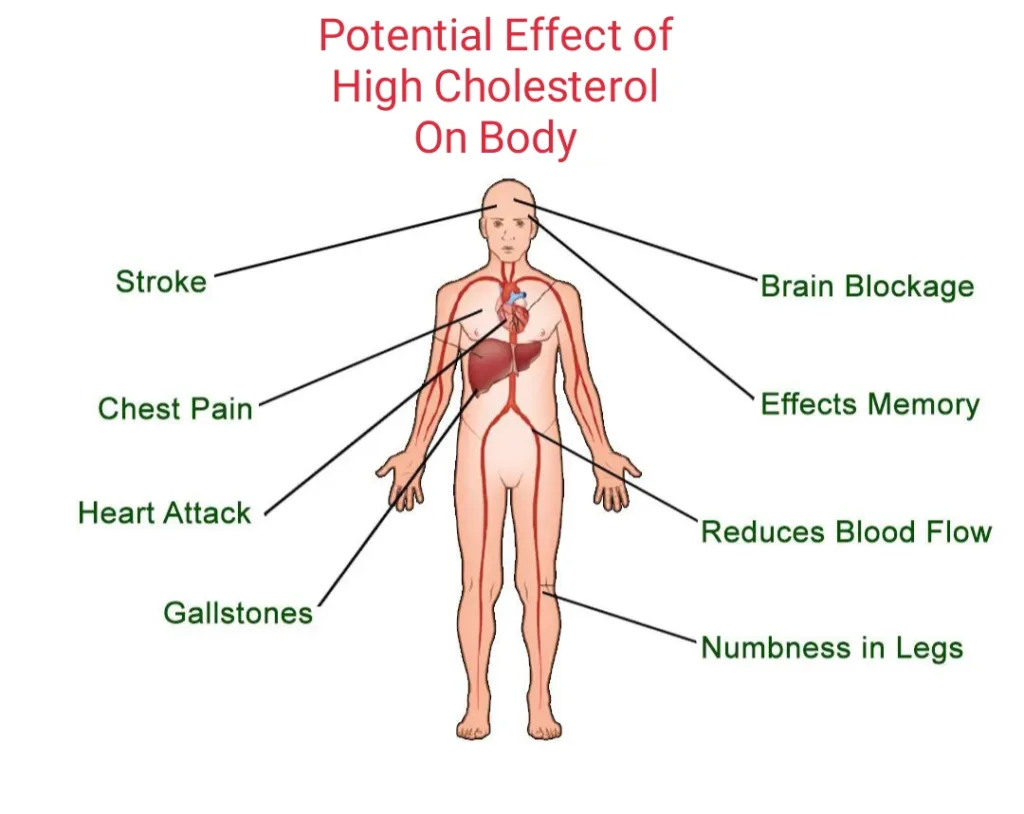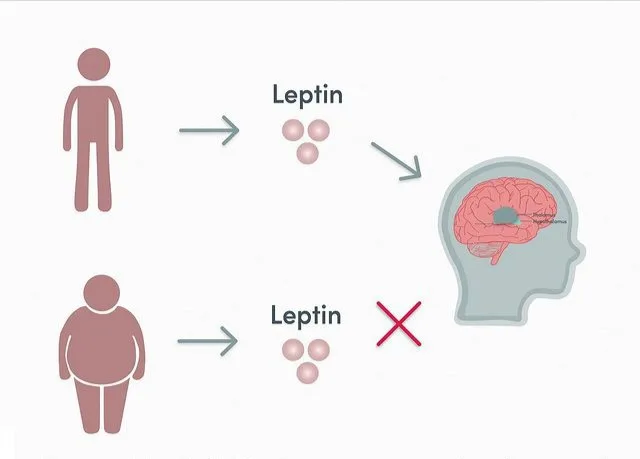Understanding “What Is High Blood Pressure?” involves not only recognizing its causes, symptoms, and associated health risks but also actively engaging in preventive measures and management strategies.
You know high blood pressure is bad, but you probably have a little trouble getting your head around the whole concept of how “blood pressure” works. “Can’t we just let a little of the blood out and lower the pressure?” you might wonder. If only it were so easy.
What Is High Blood Pressure?
High blood pressure, scientifically termed hypertension, is a prevalent medical condition that occurs when the force exerted by blood against the walls of the arteries is consistently too high. This force, known as blood pressure, is measured in millimeters of mercury (mmHg) and is represented by two numbers: systolic pressure (the force when the heart beats) over diastolic pressure (the force when the heart is at rest between beats).
Understanding the dynamics of high blood pressure involves recognizing that normal blood pressure maintains a delicate balance, ensuring adequate blood flow to meet the body’s demands without putting undue stress on the arterial walls. However, when this balance is disrupted and the pressure remains consistently elevated, it poses significant health risks.
The Circulatory System: More Than a Garden Hose
When most people think of blood pressure, they think in terms of a garden hose: Too much pressure, and the hose bursts, unless you open the valve. But that model is too simple. It helps instead to think of your circulatory system as more like the Erie Canal—a series of locks and gates that help move blood around to where it’s needed.
Gravity works on your blood just like it works on the rest of your body: It wants to pull everything downward. So imagine yourself hopping out of bed tomorrow morning and standing up. Gravity wants to take all that blood that’s distributed throughout your body and pull it down into your feet. You, on the other hand, would like that blood to pump to your brain, where it can help you figure out where the hell your keys are.
On cue, arteries in the lower body constrict while the heart dramatically increases output. The instant result: Blood pressure rises, and blood flows to the brain. Ahh, there they are—in the dog’s water dish, right where you left them.
The Domino Effect of High Blood Pressure
It’s an ingenious system, but one that’s incredibly easy to throw out of whack. When you pack on extra padding around your gut, your heart pumps harder to force blood into all that new fatty tissue. When you nosh on potato chips and other high-sodium foods, your body retains water in order to dilute the excess sodium, increasing overall blood volume. When you line your arteries with plaque from too many fatty meals, pressure increases as the same amount of blood has to squeeze through newly narrowed vessels.
When you let the pressures of the day haunt you into the night, your brain pumps out stress hormones that keep your body in a perpetual state of fight-or-flight anxiousness, also forcing your heart to pump harder. High-salt, high-fat diets, and an excess of stress all combine to create a dangerous situation.
Much to the dismay of Quentin Tarantino fans, letting out some blood won’t relieve the pressure. Your heart is still pumping, and your blood vessels are still dilating and contracting to make sure the blood goes where it’s needed. When the pressure remains high for years on end, thin-walled vessels in the brain can burst under extreme pressure; brain cells die as a result in what’s known as a hemorrhagic stroke. Or hypertension can cause plaque buildup in one of the brain’s arteries, eventually cutting off blood flow. (High blood pressure damages smooth artery walls, creating anchor points for plaque to latch onto.) Kidney failure or a heart attack can also follow from dangerous plaque accumulations.
Then there’s the plain old wear and tear that high blood pressure causes on your ticker. Over time, the extra work brought on by high blood pressure causes the walls of the heart to stiffen and thicken. The heart becomes a less efficient pump, unable to push out as much blood as it takes in. Blood backs up, the heart gives out, and the coroner scribbles “congestive heart failure” on your chart.
Understanding the Numbers
Ideally, your blood pressure should be 120/80 or lower. What do those numbers mean? The top number, called the systolic pressure, is the pressure generated when the heart beats. The bottom number is the diastolic pressure, the pressure on your blood vessels when the heart is resting between beats.
Higher readings are broken out into three categories:
- Prehypertensive: 120–139 systolic/80–89 diastolic. Prehypertensives should start worrying now about their blood pressure, concentrating on diet and exercise tips like those found in the Dash Diet. You may not see the flashing lights in your mirror right now, but your radar detector just went off. Time to slow down.
- Stage I hypertensive: 140–159 systolic/90–99 diastolic. For people who fall in this range, drug therapy is usually recommended in addition to lifestyle changes. Your risk of heart attack or stroke is elevated, and you need to be under a doctor’s care.
- Stage II hypertensive: 160 or greater systolic/100 or greater diastolic. Advanced drug therapy is often a must for people at this level, who face a serious risk of being maimed or killed by their condition.
So, two questions: Do you know what your blood pressure is? If not, are you freaked out enough by now to start taking care of it? Fortunately, the Dash Diet Power foods can help by cutting down on the bad fats in your diet and increasing the good ones, and by slashing away some of those extra pounds. So can the high blood pressure workout, as well as a few stress-reduction techniques. In the meantime, try attacking the problem with some of these simple tips.
Tips for Managing Blood Pressure
1. Make it a low-sodium V8
Make that, two 5.5-ounce cans: 11 ounces of V8 contains nearly 1,240 milligrams (mg) of potassium. In a study published in the Journal of Human Hypertension, researchers found that prehypertensive patients who added more potassium to their diets lowered their systolic pressure by 2.5 points and their diastolic by 1.6 points. 1 2
Potassium helps sweep excess sodium from the circulatory system, causing the blood vessels to dilate. What makes V8 better than a banana (another good source of potassium)? V8 also contains lycopene and lutein, two phytochemicals that have their own blood pressure–lowering properties.
2. Cut out the cold cuts
One slice of ham contains 240 milligrams of sodium, more salt than you’ll find on the outside of two pretzel rods. The point: Lose the lunch meat, and lower your blood pressure.
A recent study found that prehypertensive people who reduced their daily sodium consumption from 3,300 to 1,500 milligrams knocked nearly 6 points off their systolic blood pressure and close to 3 off their diastolic. 3 4
If you want to have your hoagie and eat it, too, at least switch to the Boars Head line of low-sodium meats—ham, turkey, roast beef—and leave the pickle on your plate (833 milligrams of sodium). Another rule of thumb: If a food comes canned or jarred, it’s probably a salt mine.
3. Go two rounds and out
Make the second drink of the night your last call for alcohol. In a landmark study published in the New England Journal of Medicine, researchers found that one or two drinks a day actually decreased blood pressure slightly. 5 6
Three drinks or more a day, however, elevated blood pressure by an average of 10 points systolic and 4 diastolic. The type of alcohol doesn’t matter. Heck, order a screwdriver: Orange juice is one of the best sources of blood pressure–lowering potassium.
4. Drink more tea
An American Heart Association study found that men who drank two cups of tea a day were 25 percent less likely to die of heart disease than guys who rarely touched the stuff. 7 8
The reason: Flavonoids in the tea not only improve blood vessels’ ability to relax, but also thin the blood, reducing clotting.
5. Top your toast
Black currant jelly is a good source of quercetin, an antioxidant that Finnish researchers believe may improve heart health by preventing the buildup of the free radicals that can damage arterial walls and allow plaque to penetrate. 9
6. Have a Mac (intosh) attack
Men who frequently eat apples have a 20 percent lower risk of developing heart disease than men who eat apples less often. 10 11
7. Eat fresh berries
Raspberries, strawberries, and blueberries are all loaded with salicylic acid—the same heart disease fighter found in aspirin. 12 13
8. Order the tuna
Omega-3 fats in tuna and other fish as well as flaxseed help strengthen heart muscle, lower blood pressure, prevent clotting, and reduce levels of potentially deadly inflammation in the body. 14 15
9. Squeeze a grapefruit
One grapefruit a day can reduce arterial narrowing by 46 percent, lower your bad cholesterol level by more than 10 percent, and help drop your blood pressure by more than 5 points. 16
10. Feast on potassium
Slice a banana (487 milligrams) on your cereal, then bake two small sweet potatoes (612 mg) or cook up some spinach (1 cup has 839 mg) for dinner. All are loaded with potassium.
Studies show that not getting at least 2,000 milligrams of potassium daily can set you up for high blood pressure. Other good sources of potassium include raisins (1 cup, 1,086 mg), tomatoes (1 cup sauce, 811 mg), lima beans (1 cup, 955 mg), and papayas (one has 781 mg of the mineral).
11. Buy calcium-fortified OJ
Increasing the calcium in your diet can lower your blood pressure. You’ll derive a benefit from the vitamin C as well. According to research from England, people with the most vitamin C in their bloodstreams are 40 percent less likely to die of heart disease. 17 18
12. Snack on pumpkin seeds
One ounce of seeds contains 151 mg of magnesium, more than a third of your recommended daily intake.
Magnesium deficiencies have been linked to most risk factors for heart disease, including high blood pressure, elevated cholesterol levels, and increased buildup of plaque in the arteries. 19 20
Other great sources: halibut (170 mg in 7 ounces of fish), brown rice (1 cup, 84 mg), chickpeas (1 cup, 79 mg), cashews (1 ounce, 74 mg), and artichokes (one gives you 72 mg).
13. Change your oil
Researchers in India found that men who replaced the corn and vegetable oils in their kitchens with monounsaturated fats (olive oil or, in this case, sesame seed oil) lowered their blood pressure by more than 30 points in just 60 days without making any other changes in their diets. 21 22
14. Cut down on mindless candy snacking
A compound in licorice root has been shown to spike blood pressure—especially in men who eat a lot of black licorice. Fruit-flavored licorice, however, doesn’t contain the compound. 23 24
Lifestyle Changes for a Healthier Heart
Regular monitoring of your blood pressure is not just a health suggestion; it’s a crucial aspect of maintaining a healthier heart. Many individuals are unaware of their current blood pressure, making it imperative to find out. Pharmacies and clinics often offer free blood pressure checks, and for added convenience, investing in a home blood pressure monitor is a wise decision. Regular tracking empowers you with the knowledge needed to make informed decisions about your heart health.
Embrace a Heart-Healthy Diet
Your dietary choices wield considerable influence over blood pressure management. Let’s explore these guidelines in detail:
Reduce Sodium Intake
Reducing sodium intake is a pivotal aspect of cultivating a heart-healthy lifestyle. Embracing fresh, whole foods instead of processed alternatives forms the cornerstone of this endeavor. By making this dietary shift, you can not only savor the rich flavors and nutritional benefits of unprocessed foods but also contribute to better cardiovascular health.
A crucial companion to choosing whole foods is the conscious limitation of table salt in daily culinary practices. Sodium, a component of salt, plays a crucial role in regulating fluid balance within the body. However, excessive sodium intake can elevate blood pressure, thereby increasing the risk of cardiovascular diseases. 25 26 27
Hence, a strategic reduction in salt usage can have a profound impact on maintaining optimal blood pressure levels and fostering a heart-friendly environment.
This straightforward dietary adjustment is a proactive measure in promoting overall cardiovascular well-being. It aligns with broader health recommendations, encouraging individuals to be mindful of their food choices and embrace a balanced, nutritious diet. Beyond the immediate benefits to heart health, reducing sodium intake can positively influence other aspects of well-being, such as kidney function and fluid retention.
DASH Diet
The Dietary Approaches to Stop Hypertension (DASH) diet stands out as a scientifically supported and nutritionally sound approach to promoting cardiovascular health. This dietary regimen has gained acclaim for its effectiveness in managing hypertension while offering a plethora of heart-healthy benefits.
At its core, the DASH diet places a significant emphasis on a diverse and nutrient-rich array of foods. The inclusion of ample fruits ensures a rich source of vitamins, minerals, and antioxidants, contributing to overall well-being. Vegetables, with their fiber content and essential nutrients, play a pivotal role in supporting digestive health and maintaining optimal body functions.
Whole grains, another cornerstone of the DASH diet, bring a host of benefits. They provide sustained energy due to their complex carbohydrates, contribute to heart health through their fiber content, and offer a range of essential nutrients. The emphasis on lean proteins further complements the diet’s focus on heart health, as these proteins are lower in saturated fats, reducing the risk of cardiovascular issues.
Moreover, the DASH diet aligns with current scientific understanding of the interplay between diet and health. Research consistently underscores the importance of a diet rich in fruits, vegetables, whole grains, and lean proteins in mitigating the risk of chronic diseases, particularly those related to the heart.
Potassium-Rich Foods
Potassium, an essential mineral, plays a pivotal role in maintaining optimal bodily functions, particularly in the realm of cardiovascular health. Incorporating a variety of potassium-rich foods into your daily diet not only adds delightful flavors but also serves as a science-backed strategy to counterbalance sodium levels.
Bananas, renowned for their potassium content, stand as a versatile and easily accessible choice. Beyond their convenience, they contribute significantly to the regulation of blood pressure. Potassium facilitates blood vessel dilation, a mechanism crucial for the maintenance of healthy blood pressure levels. By enhancing vasodilation, potassium aids in reducing the strain on the cardiovascular system, promoting smoother blood flow, and mitigating the risk of hypertension.
Sweet potatoes, another potassium powerhouse, offer not only a delectable addition to meals but also a host of nutritional benefits. The synergy of potassium and other essential nutrients in sweet potatoes contributes to cardiovascular health by fostering the delicate balance required for optimal blood pressure regulation.
The verdant allure of spinach makes it a potent contender in the realm of potassium-rich foods. Packed with not only potassium but also a plethora of vitamins and minerals, spinach supports overall cardiovascular function. Its potassium content acts in tandem with other bioactive compounds, working synergistically to maintain blood pressure within a healthy range.
Oranges, with their vibrant citrusy appeal, bring more than just a burst of flavor to the table. Rich in potassium, these fruits contribute to the intricate dance of electrolytes that govern proper fluid balance within the body. This balance, in turn, aids in the regulation of blood pressure, promoting cardiovascular health.
Healthy Fats
Healthy fats are like the unsung heroes of a well-balanced diet, working behind the scenes to promote not only cardiovascular well-being but also overall health. Avocados, with their creamy texture and rich flavor, are a prime example of a nutrient-packed source of monounsaturated fats. These healthy fats have been linked to lower levels of bad cholesterol (LDL) and higher levels of good cholesterol (HDL), contributing to a healthier lipid profile and reducing the risk of heart disease.
Olive oil, a staple in Mediterranean cuisine, is another champion in the realm of healthy fats. Packed with monounsaturated fats and antioxidants, olive oil not only adds a delightful taste to dishes but also provides anti-inflammatory benefits that support heart health. The Mediterranean diet, often praised for its positive impact on cardiovascular well-being, emphasizes the consumption of olive oil as a primary source of dietary fat.
When it comes to omega-3 fatty acids, fatty fish like salmon, mackerel, and trout take the spotlight. These essential fatty acids are renowned for their role in reducing inflammation, improving blood vessel function, and preventing the formation of blood clots. Incorporating omega-3-rich fish into your diet not only supports heart health but also contributes to brain function.
Beyond their direct cardiovascular benefits, these healthy fats play a vital role in the absorption of fat-soluble vitamins, including vitamins A, D, E, and K. They act as carriers, facilitating the transport of these crucial vitamins throughout the body, ensuring their optimal utilization for various physiological functions.
Limit Alcohol
Limiting alcohol intake is a prudent practice that involves balancing the potential cardiovascular benefits of moderate consumption with the adverse effects of excessive drinking. Scientific evidence suggests that moderate alcohol consumption may indeed offer certain cardiovascular advantages. However, it is crucial to emphasize the delicate equilibrium required to harness these benefits without compromising overall health, especially concerning blood pressure.
Studies have shown that moderate alcohol consumption may contribute to a favorable cardiovascular profile by improving lipid profiles, reducing inflammation, and enhancing insulin sensitivity. These factors collectively contribute to a potential reduction in the risk of heart disease. Nevertheless, the line between moderate and excessive alcohol intake is easily blurred, and crossing this threshold can lead to detrimental consequences, including elevated blood pressure.
Excessive alcohol consumption has been consistently linked to an increase in blood pressure levels. This effect is particularly noteworthy as elevated blood pressure is a major risk factor for cardiovascular diseases, including heart attacks and strokes. Understanding the nuanced relationship between alcohol and blood pressure underscores the importance of moderation in alcohol consumption.
By exercising restraint in alcohol intake, individuals can strike a balance that allows them to enjoy potential cardiovascular benefits without compromising their blood pressure. Moderation entails adhering to recommended guidelines for alcohol consumption, which typically advise up to one drink per day for women and up to two drinks per day for men. Adhering to these guidelines not only safeguards against the adverse effects of excessive alcohol on blood pressure.
Engage in Regular Physical Activity
Exercise stands as a formidable ally in blood pressure management. Strive for at least 150 minutes of moderate-intensity aerobic exercise each week. Activities like brisk walking, swimming, or cycling contribute to overall cardiovascular fitness. Additionally, integrating strength training exercises at least twice a week further fortifies your heart health.
Manage Stress Effectively
Chronic stress is a silent contributor to elevated blood pressure. Implementing stress-reduction techniques is paramount for overall well-being:
Meditation
Integrating science-backed mindfulness meditation into your daily routine can prove to be a powerful tool for enhancing not only your mental well-being but also your overall physical health. Numerous studies have demonstrated the positive impact of meditation on stress reduction and relaxation, making it a valuable practice for anyone seeking a holistic approach to wellness.
Engaging in mindfulness meditation involves cultivating a heightened awareness of the present moment, allowing you to observe your thoughts and feelings without judgment. Scientific research has shown that regular meditation can lead to changes in brain structure and function, particularly in areas associated with stress regulation and emotional processing.
One of the key physiological benefits of mindfulness meditation is its impact on the body’s stress response. Through practices such as focused breathing and body scan techniques, meditation has been found to lower cortisol levels, the hormone associated with stress. This not only helps in alleviating the immediate feelings of stress but also contributes to long-term resilience against its detrimental effects on both mental and physical health.
Moreover, meditation has been linked to improvements in sleep quality, immune function, and cardiovascular health. Studies have suggested that the relaxation response induced by meditation can positively influence the autonomic nervous system, leading to a reduction in heart rate and blood pressure. These changes contribute to an overall sense of calmness and well-being, further reinforcing the role of mindfulness meditation as a scientifically supported approach to stress management.
Deep Breathing Exercises
Engaging in deep breathing exercises is not just a wellness trend; it’s a scientifically validated method to promote mental and physical health. These exercises, rooted in the principles of mindfulness and controlled breathing, have been shown to effectively rduce anxiety and exert a positive influence on blood pressure.
Scientific studies consistently demonstrate the profound impact of deep breathing on the body’s stress response. When we engage in intentional, deep breaths, the body activates the parasympathetic nervous system, often referred to as the “rest and digest” system. This activation leads to a decrease in the production of stress hormones, such as cortisol, resulting in a calmer physiological state.
Moreover, deep breathing exercises have been linked to improvements in blood pressure regulation. Research indicates that the rhythmic and deliberate nature of deep breathing enhances blood flow, promoting better oxygenation of tissues and organs. This, in turn, contributes to the maintenance of optimal blood pressure levels, reducing the risk of hypertension-related complications.
The science behind deep breathing also highlights its impact on the autonomic nervous system, which regulates involuntary bodily functions, including heart rate and respiratory rate. By engaging in slow, deep breaths, individuals can modulate the activity of the autonomic nervous system, fostering a sense of control and balance in the midst of stressors.
Implementing deep breathing exercises into a daily routine can have long-term benefits. Not only do these practices offer immediate relief from anxiety and stress, but they also contribute to a more resilient stress response over time. The cumulative effect of regular deep breathing can create positive changes in the brain, promoting emotional regulation and enhancing cognitive functions related to stress management.
Yoga
Scientifically substantiated, the practice of yoga has been shown to positively impact both the body and mind, making it a formidable tool for holistic stress management.
The practice of yoga involves a series of postures, known as asanas, which gently stretch and strengthen various muscle groups, thereby enhancing flexibility. Yet, its transformative power extends far beyond the physical realm. Through the mindful integration of breath and movement, yoga cultivates a heightened awareness of the present moment, fostering mental clarity and emotional balance.
In the crucible of our modern, fast-paced lives, stress has become an omnipresent companion. Here, yoga assumes the role of a powerful ally, offering a sanctuary where individuals can find solace and reprieve. By engaging in deliberate breathwork and meditation, practitioners unlock the gates to inner calmness, effectively managing stress and promoting mental resilience.
Furthermore, the cardiovascular benefits of yoga contribute to its status as a comprehensive health tonic. While some may perceive yoga as primarily static, certain styles incorporate dynamic sequences and flowing movements that elevate the heart rate, promoting cardiovascular health. This dynamic aspect, coupled with the meditative components of yoga, creates a unique fusion that not only strengthens the physical body but also nurtures the cardiovascular system.
Nature Time
The symbiotic relationship between humans and the natural world has been intricately woven into the fabric of our evolutionary history.
Engaging with nature isn’t just a pleasant pastime; it’s a prescription for mental and cardiovascular health. Scientific studies consistently highlight the myriad benefits of spending time amidst the trees, under the open sky, or by the gentle lapping of water. The impact on mental health is particularly noteworthy, with nature acting as a sanctuary for the mind.
Moreover, the restorative power of nature extends its benevolent hand to the cardiovascular system. Studies indicate that exposure to natural environments can lower blood pressure and reduce the risk of heart disease. The gentle rustle of leaves, the soothing sounds of a babbling brook, and the crisp scent of fresh air aren’t just poetic descriptions; they are tangible elements contributing to the physiological well-being of individuals.
Achieve and Maintain a Healthy Weight
Maintaining a healthy weight is integral to reducing the workload on your heart and regulating blood pressure. A combination of a balanced diet and regular physical activity is the key to achieving and sustaining your weight goals.
Kick Unhealthy Habits
Unhealthy habits like smoking and excessive caffeine intake can adversely affect blood pressure:
Smoking Cessation
If you smoke, seeking support to quit is a crucial step towards better heart health. Smoking cessation not only benefits blood pressure but also has a myriad of other health advantages.
The immediate and profound effect of smoking cessation on heart health cannot be overstated. Smoking is a major risk factor for cardiovascular diseases, as it contributes to the development of atherosclerosis and increases blood pressure. By quitting smoking, you initiate a process of remarkable recovery for your cardiovascular system. The risk of heart attack and stroke diminishes, and the overall efficiency of your heart improves. Arteries gradually regain their flexibility, reducing the strain on the cardiovascular system.
One of the first noticeable benefits of quitting smoking is the positive impact on blood pressure. Nicotine, a key component in cigarettes, has vasoconstrictive properties, causing blood vessels to narrow and elevating blood pressure. As you abstain from smoking, this vasoconstriction diminishes, allowing blood vessels to dilate and blood pressure to normalize. This not only reduces the immediate risk of hypertension-related complications but also sets the stage for long-term cardiovascular health.
Beyond cardiovascular improvements, smoking cessation initiates a rejuvenation process for the respiratory system. Coughing and shortness of breath, common symptoms of smoking-related respiratory issues, gradually subside. The cilia, hair-like structures in the airways responsible for clearing mucus and debris, begin to recover their function. This leads to improved lung function and a decreased risk of respiratory infections.
Smoking is a primary cause of various cancers, particularly lung cancer. By quitting, you significantly reduce your risk of developing not only lung cancer but also cancers of the throat, mouth, esophagus, and other organs. The body’s ability to repair damaged DNA and regulate cell growth improves, lowering the likelihood of malignant transformations.
Smoking compromises the immune system, making individuals more susceptible to infections. Smoking cessation allows the immune system to recover and strengthen its defense mechanisms. As a result, the body becomes more adept at warding off infections, promoting overall health and resilience.
Caffeine Moderation
The stimulating effects of caffeine, commonly found in coffee, tea, and various energy drinks, can be advantageous when consumed judiciously. However, excessive intake has been associated with adverse effects, such as heightened blood pressure levels, which may pose risks to cardiovascular function.
Scientific evidence suggests that moderate caffeine consumption can have positive effects on cognitive function, alertness, and mood. Caffeine achieves these effects by blocking adenosine receptors in the brain, thereby reducing the perception of fatigue and promoting a state of heightened alertness. Nevertheless, it is imperative to strike a balance, as prolonged and excessive stimulation of the cardiovascular system can lead to increased blood pressure.
In moderation, caffeine has been linked to potential cardiovascular benefits, such as improved endothelial function and a reduced risk of certain cardiovascular diseases. However, the threshold for moderation varies among individuals based on factors like age, overall health, and genetic predispositions.
To embrace the benefits of caffeine without compromising heart health, individuals should be mindful of their daily intake. The recommended daily limit for most adults is generally considered to be around 400 milligrams, equivalent to approximately four 8-ounce cups of brewed coffee. It’s essential to recognize that caffeine content varies across different beverages and products, so awareness of these variations is crucial in managing overall intake.
In addition to monitoring caffeine intake, incorporating other heart-healthy lifestyle practices, such as regular physical activity, maintaining a well-balanced diet rich in antioxidants and nutrients, and managing stress levels, further supports cardiovascular health. These holistic approaches contribute to a comprehensive strategy for overall well-being, ensuring that the potential benefits of caffeine are harnessed without compromising the delicate balance of the cardiovascular system.
Prioritize Quality Sleep
Quality sleep is a cornerstone of overall health, and its impact on blood pressure should not be underestimated:
Aim for 7-9 Hours
Scientifically speaking, the duration and quality of your sleep play pivotal roles in maintaining optimal health, with profound implications for blood pressure regulation. Aim to secure a substantial 7-9 hours of sleep each night, as this timeframe aligns with the recommended sleep duration for adults established by numerous health organizations.
To maximize the benefits of your sleep, consider establishing a consistent sleep routine. The body’s internal clock, known as the circadian rhythm, thrives on regularity. Going to bed and waking up at the same time each day helps synchronize this biological rhythm, promoting more restful and efficient sleep cycles.
Furthermore, the creation of a conducive sleep environment is imperative. Optimal room temperature, minimal noise, and the absence of electronic devices emitting blue light can significantly enhance the quality of your rest. These factors contribute to the activation of the parasympathetic nervous system, fostering a state of relaxation conducive to restorative sleep.
In essence, prioritizing 7-9 hours of quality sleep each night, coupled with a consistent sleep routine and an optimal sleep environment, acts as a science-backed strategy for promoting overall well-being and positively influencing blood pressure regulation. Recognizing sleep as a cornerstone of health underscores its integral role in achieving and maintaining a balanced and thriving life.
Stay Hydrated
Proper hydration is a cornerstone of overall health, playing a vital role in maintaining healthy blood pressure. Follow these guidelines:
Water Intake
Hydration plays a pivotal role in maintaining optimal bodily functions, and ensuring an ample intake of water is essential for promoting holistic cardiovascular well-being. The human body, comprising approximately 60% water, relies on this vital substance for a myriad of physiological processes, including the transportation of nutrients, temperature regulation, and waste elimination.
Sufficient water intake is particularly crucial for cardiovascular health, as it contributes to the maintenance of blood volume and viscosity. Adequate hydration supports the heart in efficiently pumping blood, thereby promoting optimal circulation throughout the entire cardiovascular system. Proper blood circulation, in turn, facilitates the delivery of oxygen and nutrients to various tissues and organs, ensuring their proper function and overall vitality.
In addition to enhancing circulation, staying well-hydrated also plays a role in regulating blood pressure. Dehydration can lead to a decrease in blood volume, causing the heart to work harder to pump blood, potentially resulting in elevated blood pressure. By consistently meeting the body’s water requirements, individuals can help mitigate the risk of hypertension and promote a healthier cardiovascular profile.
Limit Sugary Beverages
Reducing the intake of sugary beverages is not only a fundamental aspect of promoting a healthy weight but also plays a pivotal role in safeguarding overall well-being. Scientific evidence consistently underscores the adverse effects of excessive sugar consumption, particularly through beverages, on various aspects of health.
From a metabolic perspective, sugary drinks contribute significantly to an increased caloric intake, often leading to weight gain and the development of obesity. The body metabolizes liquid calories differently than solid food, potentially causing an imbalance in energy expenditure and storage. This disruption in energy equilibrium can be a precursor to obesity, which, in turn, is associated with a heightened risk of chronic conditions such as type 2 diabetes, cardiovascular diseases, and certain cancers.
Moreover, the impact of sugary beverages extends beyond weight management, influencing cardiovascular health as well. Excessive sugar intake has been linked to elevated blood pressure, a major risk factor for heart disease. The high fructose content in many sugary drinks may contribute to insulin resistance, inflammation, and endothelial dysfunction, collectively compromising the health of blood vessels and increasing the likelihood of hypertension.
Additionally, the correlation between sugary beverage consumption and unfavorable lipid profiles further emphasizes the need to limit their intake. Increased consumption of sugars, particularly fructose, has been associated with elevated triglyceride levels and decreased levels of high-density lipoprotein (HDL) cholesterol, both contributing factors to cardiovascular risk.
In the broader context of public health, curbing the consumption of sugary beverages aligns with efforts to mitigate the prevalence of non-communicable diseases. Policies and educational initiatives advocating for reduced sugar intake aim to empower individuals to make informed choices about their dietary habits, thereby fostering a culture of preventive health practices.
Regular Medical Check-ups
Regular visits to your healthcare provider are essential for proactive monitoring of your blood pressure and overall cardiovascular health. These check-ups provide an opportunity to discuss any concerns or changes in your health with your doctor. Following their recommendations for managing your blood pressure is crucial for long-term heart health.
In Conclusion
Understanding high blood pressure is the inaugural step toward cultivating a healthier heart. By making informed lifestyle choices and incorporating these changes gradually into your daily routine, you actively manage your blood pressure and reduce the risk of associated complications. Remember that small, consistent steps lead to significant improvements in cardiovascular health. Your heart will undoubtedly thank you for the care and attention you invest in its well-being.
- Perez V, Chang ET. “Sodium-to-potassium ratio and blood pressure, hypertension, and related factors.” Adv Nutr. 2014 Nov 14;5(6):712-41. doi: 10.3945/an.114.006783. PMID: 25398734; PMCID: PMC4224208.[↩]
- Al-Solaiman Y, Jesri A, Mountford WK, Lackland DT, Zhao Y, Egan BM. “DASH lowers blood pressure in obese hypertensives beyond potassium, magnesium and fibre.” J Hum Hypertens. 2010 Apr;24(4):237-46. doi: 10.1038/jhh.2009.58. Epub 2009 Jul 23. PMID: 19626043; PMCID: PMC2841705.[↩]
- Aronow WS. “Reduction in dietary sodium improves blood pressure and reduces cardiovascular events and mortality.” Ann Transl Med. 2017 Oct;5(20):405. doi: 10.21037/atm.2017.08.06. PMID: 29152505; PMCID: PMC5673777.[↩]
- Kojuri J, Rahimi R. ‘Effect of “no added salt diet” on blood pressure control and 24 hour urinary sodium excretion in mild to moderate hypertension.’ BMC Cardiovasc Disord. 2007 Nov 6;7:34. doi: 10.1186/1471-2261-7-34. PMID: 17986327; PMCID: PMC2245976.[↩]
- Roerecke M, Kaczorowski J, Tobe SW, Gmel G, Hasan OSM, Rehm J. “The effect of a reduction in alcohol consumption on blood pressure: a systematic review and meta-analysis.” Lancet Public Health. 2017 Feb;2(2):e108-e120. doi: 10.1016/S2468-2667(17)30003-8. Epub 2017 Feb 7. PMID: 29253389; PMCID: PMC6118407.[↩]
- Tasnim S, Tang C, Musini VM, Wright JM. “Effect of alcohol on blood pressure.” Cochrane Database Syst Rev. 2020 Jul 1;7(7):CD012787. doi: 10.1002/14651858.CD012787.pub2. PMID: 32609894; PMCID: PMC8130994.[↩]
- Chen Y, Ye Y, Zhang Z, Zhang C, Chen M, Pang J, Zhou S, Xiang Q. “Tea consumption is associated with a reduced risk of coronary heart disease in female but not male populations in Guangzhou, China.” Nutr Res Pract. 2019 Oct;13(5):393-398. doi: 10.4162/nrp.2019.13.5.393. Epub 2019 Jul 26. PMID: 31583058; PMCID: PMC6760976.[↩]
- Deka A, Vita JA. “Tea and cardiovascular disease.” Pharmacol Res. 2011 Aug;64(2):136-45. doi: 10.1016/j.phrs.2011.03.009. Epub 2011 Apr 6. PMID: 21477653; PMCID: PMC3123419.[↩]
- Gopalan A, Reuben SC, Ahmed S, Darvesh AS, Hohmann J, Bishayee A. “The health benefits of blackcurrants.” Food Funct. 2012 Aug;3(8):795-809. doi: 10.1039/c2fo30058c. Epub 2012 Jun 6. PMID: 22673662.[↩]
- Boyer J, Liu RH. “Apple phytochemicals and their health benefits.” Nutr J. 2004 May 12;3:5. doi: 10.1186/1475-2891-3-5. PMID: 15140261; PMCID: PMC442131.[↩]
- Aune D, Giovannucci E, Boffetta P, Fadnes LT, Keum N, Norat T, Greenwood DC, Riboli E, Vatten LJ, Tonstad S. “Fruit and vegetable intake and the risk of cardiovascular disease, total cancer and all-cause mortality-a systematic review and dose-response meta-analysis of prospective studies.” Int J Epidemiol. 2017 Jun 1;46(3):1029-1056. doi: 10.1093/ije/dyw319. PMID: 28338764; PMCID: PMC5837313.[↩]
- Basu A, Rhone M, Lyons TJ. “Berries: emerging impact on cardiovascular health.” Nutr Rev. 2010 Mar;68(3):168-77. doi: 10.1111/j.1753-4887.2010.00273.x. PMID: 20384847; PMCID: PMC3068482.[↩]
- Cosme F, Pinto T, Aires A, Morais MC, Bacelar E, Anjos R, Ferreira-Cardoso J, Oliveira I, Vilela A, Gonçalves B. “Red Fruits Composition and Their Health Benefits-A Review.” Foods. 2022 Feb 23;11(5):644. doi: 10.3390/foods11050644. PMID: 35267278; PMCID: PMC8909293.[↩]
- Hooper L, Thompson RL, Harrison RA, Summerbell CD, Moore H, Worthington HV, Durrington PN, Ness AR, Capps NE, Davey Smith G, Riemersma RA, Ebrahim SB. “Omega 3 fatty acids for prevention and treatment of cardiovascular disease.” Cochrane Database Syst Rev. 2004 Oct 18;(4):CD003177. doi: 10.1002/14651858.CD003177.pub2. Update in: Cochrane Database Syst Rev. 2018 Jul 18;7:CD003177. PMID: 15495044; PMCID: PMC4170890.[↩]
- Gammone MA, Riccioni G, Parrinello G, D’Orazio N. “Omega-3 Polyunsaturated Fatty Acids: Benefits and Endpoints in Sport.” Nutrients. 2018 Dec 27;11(1):46. doi: 10.3390/nu11010046. PMID: 30591639; PMCID: PMC6357022.[↩]
- Dow CA, Going SB, Chow HH, Patil BS, Thomson CA. “The effects of daily consumption of grapefruit on body weight, lipids, and blood pressure in healthy, overweight adults.” Metabolism. 2012 Jul;61(7):1026-35. doi: 10.1016/j.metabol.2011.12.004. Epub 2012 Feb 2. PMID: 22304836.[↩]
- Moser MA, Chun OK. “Vitamin C and Heart Health: A Review Based on Findings from Epidemiologic Studies.” Int J Mol Sci. 2016 Aug 12;17(8):1328. doi: 10.3390/ijms17081328. PMID: 27529239; PMCID: PMC5000725.[↩]
- Morelli MB, Gambardella J, Castellanos V, Trimarco V, Santulli G. “Vitamin C and Cardiovascular Disease: An Update.” Antioxidants (Basel). 2020 Dec 3;9(12):1227. doi: 10.3390/antiox9121227. PMID: 33287462; PMCID: PMC7761826.[↩]
- Fritzen R, Davies A, Veenhuizen M, Campbell M, Pitt SJ, Ajjan RA, Stewart AJ. “Magnesium Deficiency and Cardiometabolic Disease.” Nutrients. 2023 May 17;15(10):2355. doi: 10.3390/nu15102355. PMID: 37242238; PMCID: PMC10222666.[↩]
- Rosique-Esteban N, Guasch-Ferré M, Hernández-Alonso P, Salas-Salvadó J. “Dietary Magnesium and Cardiovascular Disease: A Review with Emphasis in Epidemiological Studies.” Nutrients. 2018 Feb 1;10(2):168. doi: 10.3390/nu10020168. PMID: 29389872; PMCID: PMC5852744.[↩]
- Boateng L, Ansong R, Owusu WB, Steiner-Asiedu M. “Coconut oil and palm oil’s role in nutrition, health and national development: A review.” Ghana Med J. 2016 Sep;50(3):189-196. PMID: 27752194; PMCID: PMC5044790.[↩]
- Jaarin K, Mustafa MR, Leong XF. “The effects of heated vegetable oils on blood pressure in rats.” Clinics (Sao Paulo). 2011;66(12):2125-32. doi: 10.1590/s1807-59322011001200020. PMID: 22189740; PMCID: PMC3226610.[↩]
- Deutch MR, Grimm D, Wehland M, Infanger M, Krüger M. “Bioactive Candy: Effects of Licorice on the Cardiovascular System.” Foods. 2019 Oct 14;8(10):495. doi: 10.3390/foods8100495. PMID: 31615045; PMCID: PMC6836258.[↩]
- Omar HR, Komarova I, El-Ghonemi M, Fathy A, Rashad R, Abdelmalak HD, Yerramadha MR, Ali Y, Helal E, Camporesi EM. “Licorice abuse: time to send a warning message.” Ther Adv Endocrinol Metab. 2012 Aug;3(4):125-38. doi: 10.1177/2042018812454322. PMID: 23185686; PMCID: PMC3498851.[↩]
- Jaques DA, Wuerzner G, Ponte B. “Sodium Intake as a Cardiovascular Risk Factor: A Narrative Review.” Nutrients. 2021 Sep 12;13(9):3177. doi: 10.3390/nu13093177. PMID: 34579054; PMCID: PMC8470268.[↩]
- Grillo A, Salvi L, Coruzzi P, Salvi P, Parati G. “Sodium Intake and Hypertension.” Nutrients. 2019 Aug 21;11(9):1970. doi: 10.3390/nu11091970. PMID: 31438636; PMCID: PMC6770596.[↩]
- Strazzullo P, Leclercq C. “Sodium.” Adv Nutr. 2014 Mar 1;5(2):188-90. doi: 10.3945/an.113.005215. PMID: 24618759; PMCID: PMC3951800.[↩]















